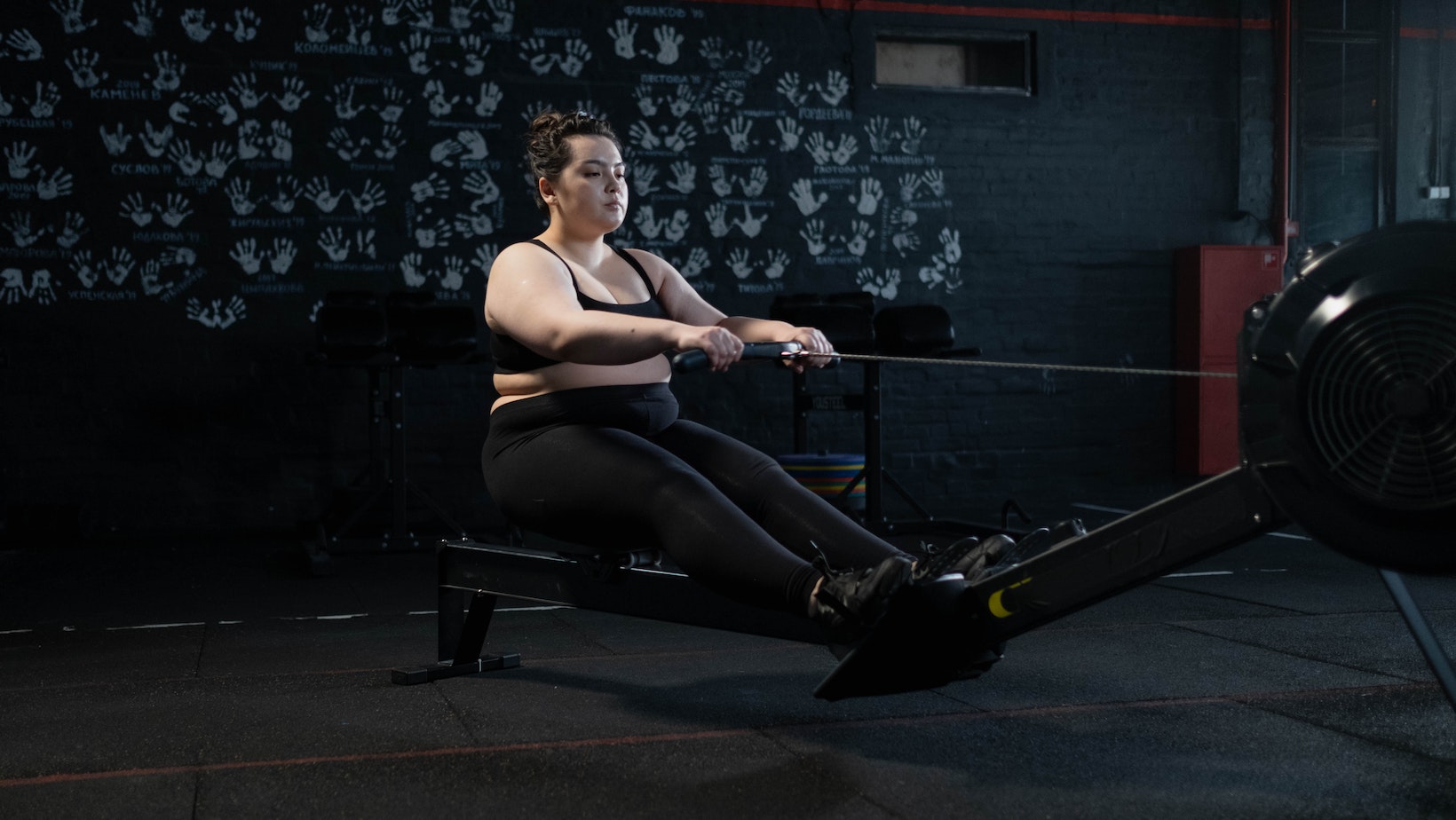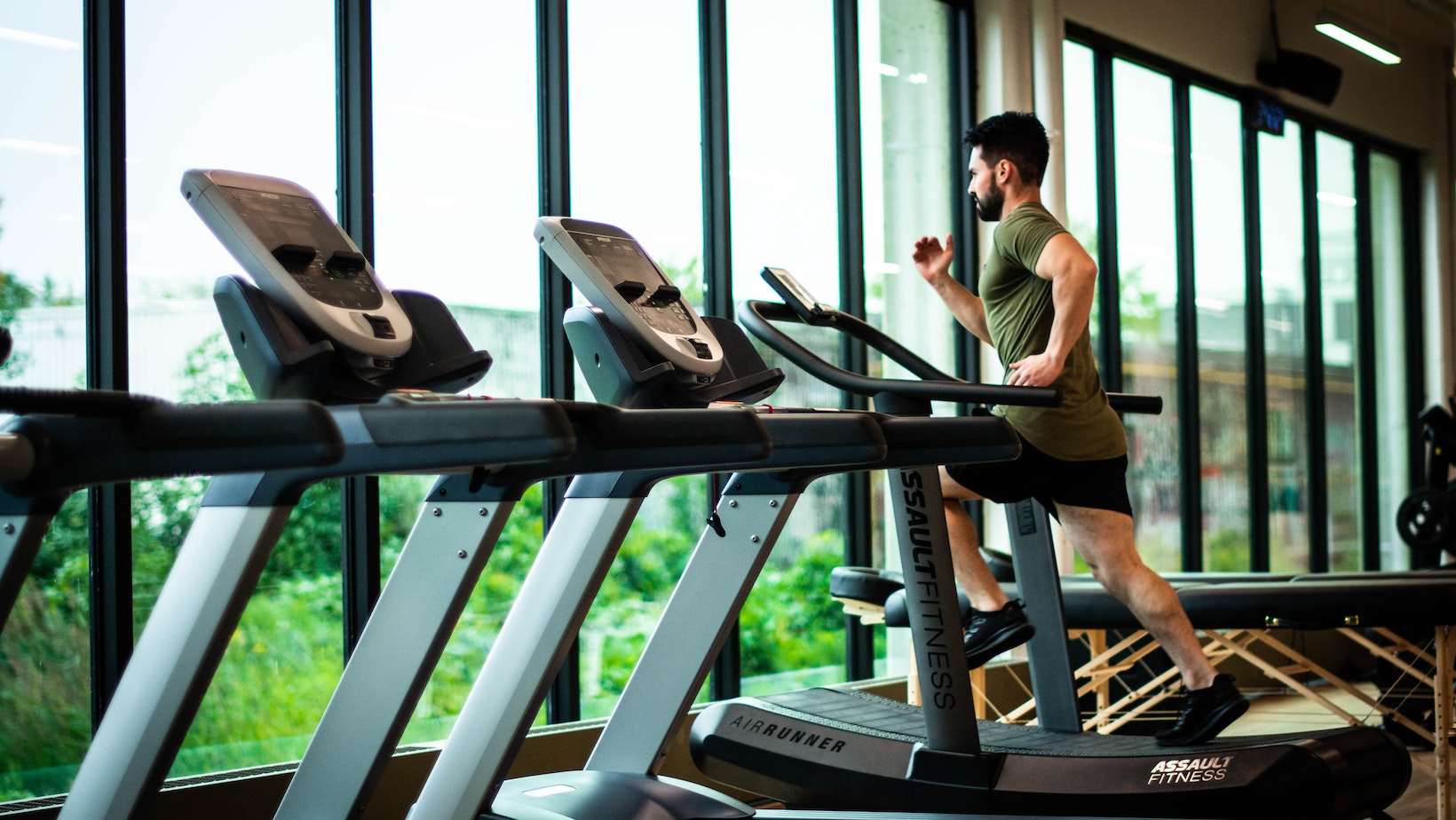
Treadmill vs Rower
When it comes to getting an effective cardio workout at home, a treadmill and a rower are two of the most popular options. While both of these machines provide a great cardiovascular workout, they have distinct differences that may make one better suited for your needs than the other.
Treadmill: The treadmill is a popular choice for those who prefer to run, jog, or walk as their primary form of cardiovascular exercise. It provides a low-impact workout that is easy on the joints, and allows for a variety of incline and speed settings to vary the intensity of the workout. Additionally, treadmills come equipped with various features such as heart-rate monitors, sound systems, and pre-programmed workouts to provide an engaging workout experience.
Rower: The rower, on the other hand, provides a full-body, high-intensity workout that engages multiple muscle groups. It mimics the motion of rowing a boat, creating a low-impact workout that still maximizes calorie burn and increases cardiovascular endurance. Rowing machines may also be more space-efficient than a treadmill, making it a good choice for those with limited space.
Ultimately, the decision between a treadmill and rower comes down to your personal preferences and fitness goals. Consider factors such as your preferred mode of exercise, available space, and desired features when making your decision.
Pro tip: Want to maximize the benefits of both machines? Consider incorporating both the treadmill and rower into your fitness routine to get a well-rounded cardio workout and engage a variety of muscle groups.
Features of Treadmill and Rower
Choosing between a treadmill and a rower can be a daunting task, as both machines have unique features and benefits. However, it is important to take into account your fitness goals and the features of each of these machines before choosing the one that is right for you. In this article, we will cover the features of both the treadmill and the rower, so that you can make an informed decision.
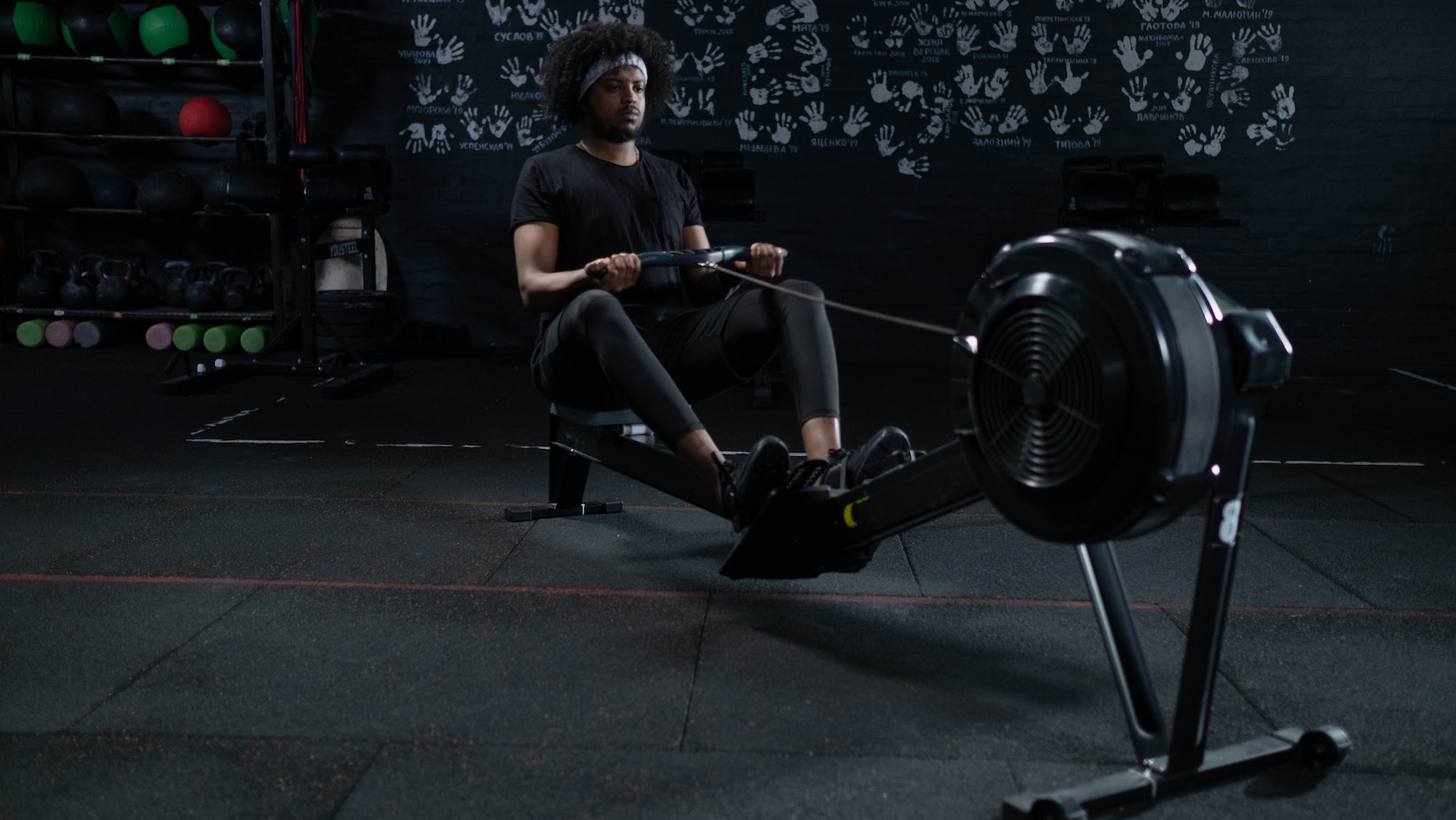
Overview of Treadmill Features
The treadmill is a popular exercise equipment that simulates the experience of running outdoors. It has various features that make it a favorite among fitness enthusiasts.
Here are some of the key features of treadmills:
|
1. Motorized or manual: |
Treadmills can be motorized or manual, with the former being more common. Motorized treadmills are powered by a motor and use electricity to run. Manual treadmills rely on the user’s movement to power the belt. |
|
2. Cushioning: |
Many high-end treadmills have cushioning systems that reduce the impact of running on joints and muscles. |
|
3. Incline and speed: |
Treadmills have adjustable incline and speed settings that allow users to increase the intensity of their workout. |
|
4. Heart rate monitor: |
Some treadmills have heart rate monitors that track the user’s heart rate during exercise. |
When comparing treadmills and rowers, it’s important to consider the features of both to determine which equipment is the best fit for your fitness goals and needs. While treadmills are great for cardiovascular workouts, rowers offer a full-body workout that engages multiple muscle groups.
Pro tip – Choose the equipment that aligns with your fitness goals and preferences to ensure maximum results.
Overview of Rower Features
When comparing treadmills and rowers, it’s essential to understand the various features that each machine offers.
|
Treadmills |
Rowers |
|
1. Running surface: Treadmills have a flat surface area that allows users to walk, jog, or run comfortably. |
1. Resistance levels: Rowers have adjustable resistance levels that provide users with a challenging workout. |
|
2. Incline: Treadmills have adjustable incline settings that simulate uphill running, providing users with an intense workout. |
2. Compact size: Rowing machines have a smaller footprint than treadmills, making them ideal for small home gyms. |
|
3. Speed: Treadmills allow users to adjust the speed to their preference, making it ideal for runners of all levels. |
3. Full-body workout: Rowing machines engage various muscle groups, providing a full-body workout. |
Ultimately, choosing between a treadmill and a rower depends on your fitness goals and preferences.
Comparison of Features
When looking to purchase exercise equipment, two popular options are treadmills and rowers. Here is a comprehensive guide comparing the features of treadmills and rowers to help you make an informed decision:
|
Treadmills |
Rowers |
|
Ideal for running or walking, cardio workouts, and simulating outdoor running experiences regardless of weather conditions. Equipped with an adjustable incline and speed controls, heart-rate monitoring systems, and shock absorption. |
Provide a full-body cardiovascular workout and engage almost all major muscles in your body. Offer a low-impact workout that is easy on your joints, and they have adjustable resistance levels so you can customize the intensity of your workout. |
While treadmills offer a more specific workout, rowers provide diversity and target multiple muscles at once. Ultimately, the choice between the two comes down to your specific fitness goals and preferences.
Benefits of Treadmill and Rower
Treadmills and rowers are two of the most common pieces of exercise equipment. With both machines, you can get an intense cardio workout that can help you reach your fitness goals. But what are the specific benefits of each of them? In this comprehensive guide, we’ll compare the pros and cons of using a treadmill and a rower so you can decide which one is best for you.
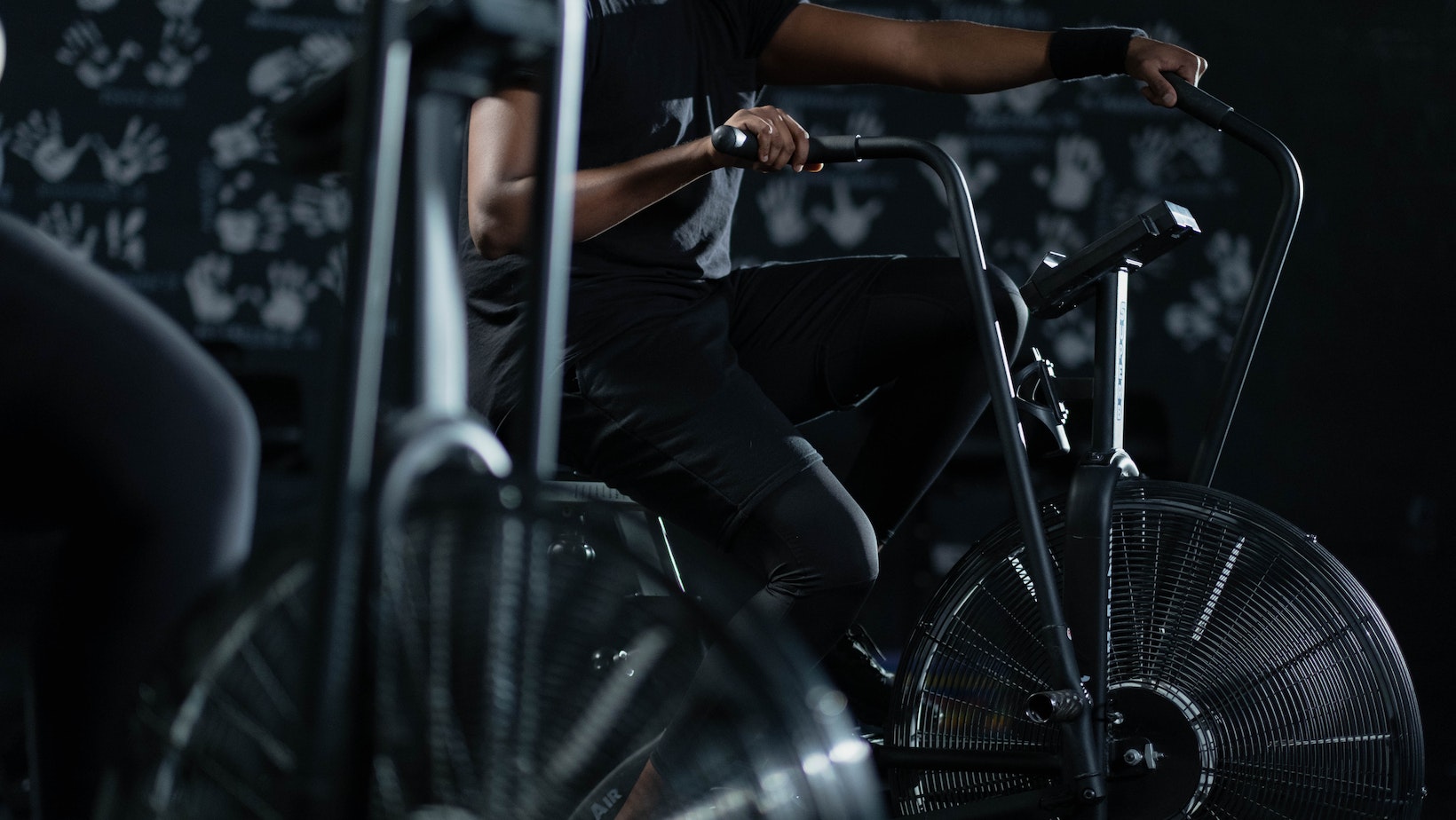
Benefits of Treadmill
Treadmills offer numerous benefits for individuals looking to improve their overall fitness level and cardiovascular health. Here are a few reasons why incorporating a treadmill into your workout routine can be beneficial:
|
Benefit |
Explanation |
|
Increased calorie burn |
Running or walking on a treadmill can help you burn more calories than other forms of exercise due to the elevated heart rate and increased effort. |
|
Convenience |
Treadmills are readily available in most gyms and can even be purchased for home use. This convenience allows you to easily incorporate a cardio workout into your daily routine. |
|
Reduced impact |
Unlike outdoor running, treadmills offer a softer surface that reduces the impact on your joints and minimizes the risk of injury. |
|
Variety |
Modern treadmills come equipped with a range of workout programs and settings that mimic different terrains and challenges, from hill intervals to sprints. |
Pro tip: While treadmills are a great way to improve your cardiovascular health, it’s important to switch up your workouts regularly to avoid boredom and ensure that other muscle groups are also getting a workout. Consider incorporating strength training and high-intensity intervals into your routine for maximum results. When it comes to choosing between a treadmill and a rower, remember that each machine offers unique benefits for different types of workouts and fitness goals.
Benefits of Rower
Rowing is a low-impact, full-body workout that offers numerous physical and mental benefits to people of all fitness levels. Compared to treadmills, rowers provide a more complete workout that engages almost every muscle group in the body. Here are some of the top benefits of rowing machines over treadmills:
|
|
|
|
All in all, while treadmills are great for running and walking, rowers offer a more complete workout that engages more muscles and provides a low-impact, full-body exercise option.
Comparison of Benefits
Treadmills and rowers are two popular types of equipment for getting a cardiovascular workout. Let’s compare the benefits of both to decide which one is right for you.
|
Treadmill |
Rower |
|
Walking or running on a treadmill helps improve cardiovascular health, endurance, and can help with weight loss. Treadmills usually have varying inclines and speeds, which allows for more intensity in the workout. |
Rowing is an excellent low-impact workout that targets all muscle groups, working the arms, legs, back, and core. Rowers help in burning more calories in a shorter amount of time and promote good posture and coordination. |
Deciding which equipment to use depends on your fitness goals, overall health, and preferences. If you want to lose weight and improve cardiovascular health, the treadmill is the best choice. However, if you want a total body workout and low-impact exercise, the rower is a better option.
Workout Effectiveness of Treadmill and Rower
You may have heard of the longstanding debate between treadmill and rower for the best exercise equipment for home use. Both pieces of equipment have clear and unbeatable strengths for improving your overall fitness. So what’s the best choice for workout effectiveness? Let’s explore the pros and cons of treadmill and rower to find out.
Treadmill Workouts
A treadmill workout is an effective exercise routine with numerous health benefits. When compared to a rower, the treadmill provides unique benefits that make it an excellent fitness equipment to include in your workout routine.
Treadmill workouts are a great way to burn excessive body fat, build endurance, and tone your muscles. Unlike a rower workout that focuses primarily on the upper body muscles, the treadmill engages both the upper and lower body muscle groups, providing a full-body workout. Additionally, treadmill workouts allow you to adjust the incline and speed, providing the flexibility to tailor your workout routine to your fitness level and exercise goals.
While a rower provides an intense upper body workout and is low impact, it can be repetitive and lacks the option to adjust the intensity level. Therefore, a mix of treadmill and rower workouts can be an ideal solution to ensure a complete cardio and strength-enhancing routine.
|
Pro Tip |
Impact on Results |
|
Pairing the right cardio and strength exercises |
Significant impact |
Be sure to consult a fitness professional before starting your workout regimen.
HIIT Workouts on Treadmill
High-Intensity Interval Training (HIIT) workouts on a treadmill can provide an effective way to burn calories, build endurance and cardio strength. Here’s how to get started:
|
Warm up for 5-10 minutes by walking or light jogging |
|
Increase your speed to a sprint for 30 seconds to 1 minute, then slow down to a walk or jog for 1-2 minutes of active recovery. |
|
Repeat the sprint-recovery cycle 4-8 times, depending on your fitness level. |
|
Finish your workout with a 5-10 minute cooldown by walking or jogging at a slower pace. |
While treadmills are great for HIIT workouts, many people wonder about their effectiveness compared to rowing machines. The truth is that both can provide excellent cardio and strength training benefits, but they are quite different in terms of muscles used and injury risk. It’s best to choose the option that works best for your fitness goals and body type.
Pro tip: When performing a HIIT workout on a treadmill, be sure to maintain proper form and stay hydrated to minimize the risk of injury or fatigue.
Endurance Workouts on Treadmill
Endurance workouts on a treadmill are a great way to increase your cardiovascular stamina and endurance levels. While comparing treadmill and rowers, it is important to understand that both machines have their own unique advantages and disadvantages when it comes to workout effectiveness. Treadmill workouts can improve your overall fitness level by burning calories, increasing heart rate, and building strength in your legs. Here are two effective endurance workouts on a treadmill:
|
1) Long-Distance Run: |
Set the speed at a comfortable pace and run continuously for 30 minutes to an hour. |
|
2) Hill Intervals: |
Set the incline to a higher level and run at a moderate pace for 2 minutes, followed by 1 minute of recovery time. Repeat this for 10 to 15 minutes. |
While both treadmill and rower are effective, choosing the one that matches your fitness goal is important. If you prefer full-body exercise and low impact option while burning calories, a rower is a better option, while a treadmill may suit you if you want to focus more on cardio with high impact exercise.
Rower Workouts
When it comes to cardio workouts, both the treadmill and rower have their unique characteristics and offer different benefits to the body. The effectiveness of a treadmill or a rower workout ultimately depends on your fitness goals and personal preferences.
Treadmill workouts are great for those who want to improve their endurance and cardiovascular health. Running on a treadmill engages your entire body, especially your leg muscles, and also burns a lot of calories quickly. Moreover, with modern treadmills including incline settings, hill training can also be incorporated.
Rower workouts, on the other hand, are excellent for a full-body workout that helps in building endurance, strength, and flexibility. Rowing targets your entire body and is low impact, making it a great option for people with joint issues. It helps in toning the arms, back, and core while providing a low-stress exercise to the joints.
At the end of the day, whether you prefer a treadmill or rower workout, the key is to choose a workout that you will enjoy and can sustain in the long run. Mixing up workouts can also add variety and improve fitness levels more efficiently.
HIIT Workouts on Rower
High-Intensity Interval Training (HIIT) workouts on a rower can be an effective way to take your cardio routine to the next level.
Here are some tips to make the most out of your HIIT workout on a rower:
- Start with a 5-minute warm-up at a low intensity to prepare your muscles.
- Alternate between 30 seconds of maximum effort and 30 seconds of active rest at a low intensity for 5-10 rounds.
- As you progress, increase the duration of the intervals and decrease the duration of the rest periods.
- Cool down for 5 minutes at a low intensity to allow your body to recover.
While the effectiveness of the treadmill and the rower depends on your fitness goals and personal preferences, the rower can provide a full-body workout that can help increase strength and endurance while burning calories.
Endurance Workouts on Rower
Endurance workouts on a rower are an excellent way to build cardiovascular endurance, increase strength and burn calories. The rowing machine provides low-impact exercise that incorporates the entire body and offers an excellent alternative to treadmill workouts.
Here are two effective endurance workouts for a rower:
|
Workout |
Instructions |
|
30-minute Endurance Row |
Maintain a moderate pace for 30 minutes, aiming for a target stroke rate and a consistent distance per stroke. |
|
Interval Training |
Alternate between high-intensity intervals (30 seconds to 1 minute) and low to moderate-intensity recovery periods (1-2 minutes) for a total of 20 to 30 minutes. This workout is an excellent way to improve cardiovascular endurance and burn calories. |
While comparing the treadmill vs rower, the rowing machine offers a full-body workout that engages your arms, legs, and core with less impact on the joints. However, a treadmill is more effective for improving running performance and offers more versatility for incline workouts.
Comparison of Workouts
When comparing the workout effectiveness of treadmill and rower, it’s important to consider different factors such as cardio, endurance, strength building and calorie burn.
|
Treadmill workouts are best for cardio and burning calories, while rowing workouts are mainly focused on building endurance, improving strength, and toning your body muscles. |
Treadmills work well for people looking to burn calories and increase their heart rate with cardio exercises. They can be an effective option for runners or those who enjoy brisk walking. However, they do not provide much resistance for muscle building.
Rowing machines are an ideal option for those looking to improve endurance levels and build overall strength. They work by incorporating both upper and lower body movements, which can provide more resistance and also help in toning several muscle groups at once.
Ultimately, the choice between a treadmill and a rower will depend on your fitness goals and personal preferences.
Pro tip: Try to mix up your workouts by alternating between the two machines to get the best of both worlds.
Safety and Maintenance of Treadmill and Rower
When selecting a machine for your workout, one of the most important considerations is the safety and maintenance associated with the equipment. A treadmill and a rowing machine are two of the most popular options for home cardio exercises; however, safety and maintenance for the two machines vary greatly. Let’s take a look at the safety and maintenance considerations for treadmills and rowers.
Safety Precautions for Treadmill
Safety is a top priority when it comes to using a treadmill. Follow these precautions to ensure a safe and enjoyable workout experience:
|
Start with a warm-up routine that includes stretching exercises to prepare your muscles and joints. |
|
Wear appropriate clothing and footwear that will not interfere with the moving parts of the treadmill. |
|
Always keep a firm grip on the side handles of the machine so that you don’t lose balance. |
|
Avoid stepping off the treadmill when it is still in motion. |
|
Keep the area around the treadmill free from objects, especially those that could get caught in the machine’s moving parts. |
|
Never allow children or pets to use or play around the treadmill. |
|
It’s important to maintain and service your treadmill regularly to ensure its longevity and functionality. |
Rower machines are another great option for cardio workouts that come with their own set of precautions and maintenance requirements. When comparing the two machines, it’s important to consider your fitness goals and preferences before making a decision.
Safety Precautions for Rower
Rower is an excellent cardiovascular exercise equipment that offers a full-body workout. However, it’s crucial to follow some essential safety precautions while using the equipment to avoid any injuries.
Here are some essential safety precautions to follow while using a rower:
|
1. Start with a warm-up routine to prepare your body for exercise. |
|
2. Follow the user manual to know the correct body posture and alignment while using the rower. |
|
3. Wear comfortable and supportive gym clothes and athletic shoes that provide adequate support to your feet. |
|
4. Adjust the resistance level that matches your fitness level and experience with the equipment. |
|
5. Never overexert yourself or use excessive force while using the rower. |
|
6. Keep yourself hydrated before, during, and after the workout to avoid dehydration. |
|
7. Keep your hands and fingers away from the moving parts of the equipment. |
By following these safety precautions, you’ll ensure a safe and effective exercise routine while using a rower.
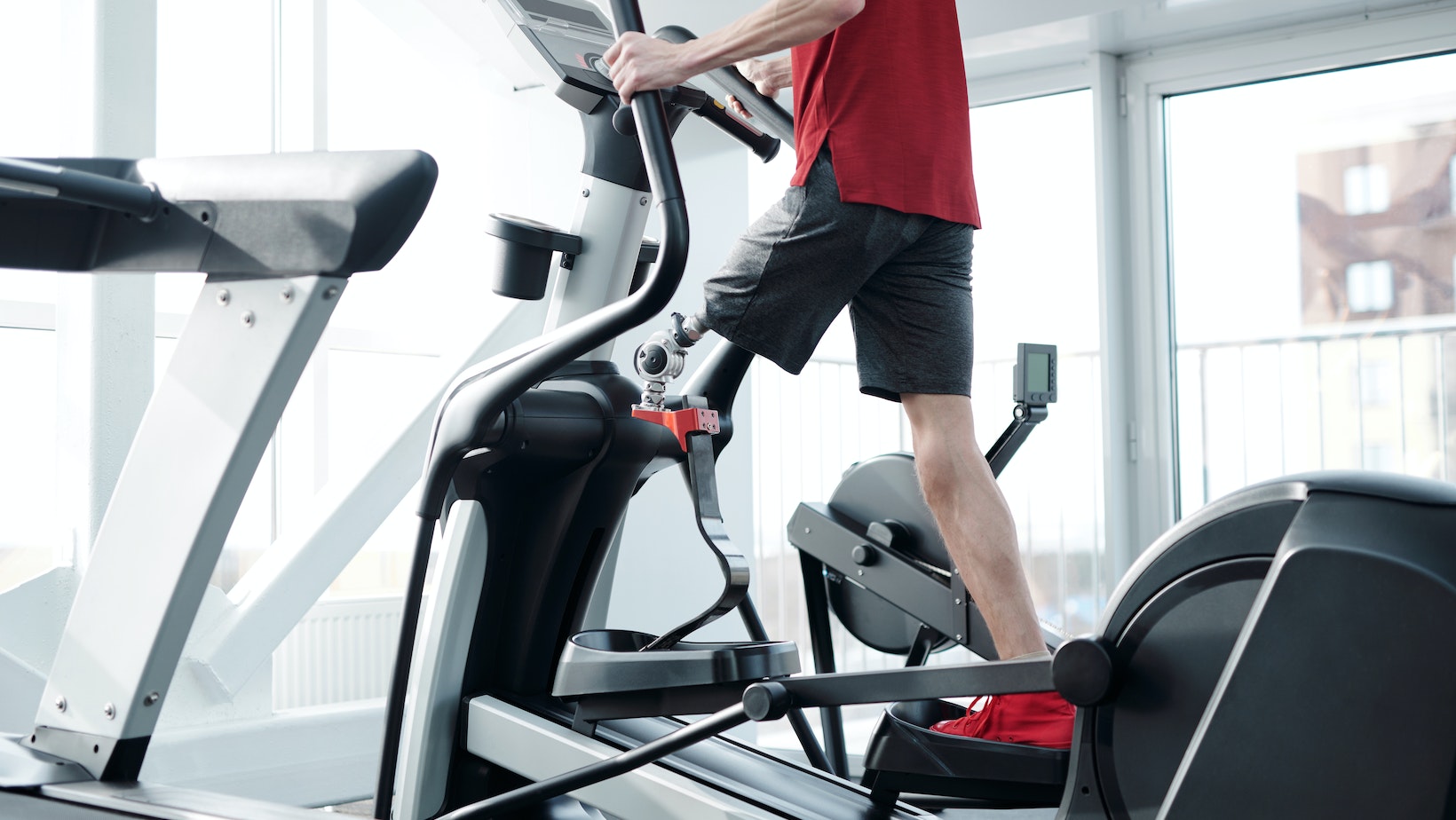
Maintenance Tips for Treadmill
Maintaining your treadmill is essential for safe and efficient use. Here are some maintenance tips for your treadmill:
|
Keep it clean: |
After each use, wipe down your treadmill with a damp cloth to remove sweat and dirt. |
|
Lubrication: |
Apply lubrication to the treadmill belt every three months, or as needed to avoid friction. |
|
Tightening screws and bolts: |
Regularly check the screws and bolts of your treadmill to ensure they are secure. |
|
Belt alignment: |
Check your treadmill’s belt alignment every few months to ensure it is centered and running smoothly. |
|
Avoid dust accumulation: |
Keep your treadmill covered when not in use to prevent the accumulation of dust and debris. |
When comparing a treadmill and a rower, it’s important to consider your fitness goals and preferences. While a treadmill provides a higher impact workout that targets the lower body, a rower provides a low-impact, full-body workout. It’s important to choose the machine that aligns with your fitness goals and preferences.
Pro tip: Regular maintenance of your treadmill can prolong its lifespan and ensure safe workouts.
Maintenance Tips for Rower
Maintaining your rower is essential to ensure its performance, prolong its lifespan, and guarantee your safety while working out.
Here are some maintenance tips for your rower:
|
1. Regularly clean your rower with water and mild soap and dry it completely to avoid rust and corrosion. |
|
2. Inspect the seat, footrests, pedals, and handlebars for any signs of wear and tear, and replace them if necessary. |
|
3. Check the tension of the belt or chain and adjust it if it’s too loose or too tight. |
|
4. Lubricate the chain or rails with silicone oil or spray to reduce friction and noise. |
|
5. Store your rower in a cool and dry place, away from direct sunlight and moisture. |
By following these maintenance tips, you can ensure your rower is in optimal condition and guarantee a safe and efficient workout.
Comparison of Safety and Maintenance
When it comes to safety and maintenance, the treadmill and the rower have their own unique advantages and disadvantages to consider.
|
Treadmill |
Rower |
|
The treadmill can be more dangerous due to its high speeds and potential for falling off the moving belt. Maintenance-wise, the treadmill requires regular lubrication of the belt and motor to prevent wear and tear and reduce noise. Cleaning the machine after every use is also important to prevent the buildup of bacteria and dirt. |
The rower is generally safer due to its low-impact nature and less risk of falling. Maintenance-wise, the rower requires occasional oiling of the chain and checking for loose screws and bolts. Cleaning is also important to prevent bacteria buildup. |
When choosing between a treadmill and a rower, it’s important to consider both the safety and maintenance requirements of each machine.
Pro Tip: Always read and follow the manufacturer’s instructions for proper use and maintenance of your exercise equipment.
Cost of Treadmill and Rower
Deciding on what type of cardio equipment to purchase for your home gym can be a challenge. In this guide, we will compare the costs of a treadmill vs rower, so you can make an informed decision about which type of machine to invest in. Let’s start by looking at the cost comparison between these two popular exercise machines.
Cost of Treadmill
The cost of a treadmill will vary depending on the type, brand, and features of the machine. Entry-level treadmills can cost anywhere from $200 to $500, while high-end models can cost upwards of $3,000. When compared to rowers, treadmills tend to be more expensive due to their complexity and size.
Rower machines, on the other hand, typically cost between $300 and $1,500. While they may not have as many features as high-end treadmills, they are a great option for those looking for a full-body workout and want to save on space and cost.
When deciding between a treadmill and a rower, it’s important to consider your fitness goals, budget, and available space.
Cost of Rower
When comparing the cost of a treadmill and a rower, there are several factors to consider. The cost of a treadmill usually ranges from $500 to $3000, whereas a rower can cost anywhere from $200 to $2500.
The price range of both these machines is dependent on the quality, features, brand, and durability of the equipment.
However, when it comes to choosing between a treadmill and a rower, it depends on your fitness goals and preferences. If your priority is low-impact cardio that targets the whole body, a rower is a great option. But if you are looking for a machine that can cater to different types of workouts while minimizing joint impacts, a treadmill is the way to go.
Regardless of which equipment you choose, investing in either of them is bound to do wonders for your overall fitness and well-being.
Comparison of Cost
When considering purchasing home gym equipment, it’s essential to understand the cost of each machine. Treadmills and rowing machines are among the most popular cardio equipment, and they have different price ranges.
|
Equipment |
Price Range |
|
Treadmills |
$500 – $3000 |
|
Rowing Machines |
$200 – $2000 |
Treadmills typically cost between $500 and $3000, depending on the brand, features, and quality of the machine. The price is often determined by factors such as the motor size, running surface, incline range, and built-in programs. While some basic models cost less, a high-quality treadmill machine can come with a hefty price tag.
Rowing machines, on the other hand, are relatively cheaper than treadmills, with prices ranging from $200 to $2000. The price is typically determined by the type of resistance, the build quality, and the features. Rowing machines with magnetic resistance tend to be more expensive than hydraulic or air-resistance machines.
Both machines have their unique features, benefits, and drawbacks, making it essential to choose the one that suits your needs and budget.
Conclusion: Which is Better- Treadmill or Rower?
When it comes to choosing between a treadmill and a rower, it ultimately depends on your fitness goals, preferences, and physical limitations. To help you make an informed decision, here are the key differences between a treadmill and a rower:
|
Treadmill |
Rower |
|
A treadmill is ideal for cardio workouts, running, and walking. It helps you burn calories and improve your endurance, but it can put stress on your joints, especially if you have a pre-existing condition. A treadmill is a good choice if you enjoy running or walking and have no joint-related concerns. |
A rower is a full-body workout that helps you build strength and endurance while burning calories. It’s low-impact and suitable for people with joint issues or injuries. However, it requires more technique and can cause back strain if not done correctly. A rower is a better choice if you want a full-body workout with minimal impact on your joints. |
Ultimately, the choice between a treadmill and a rower depends on your fitness goals and health status. Consider talking to a fitness expert before choosing either of the two.
Pro Tip: To maximize your fitness routine, you can try incorporating both equipment into your workout sessions.

